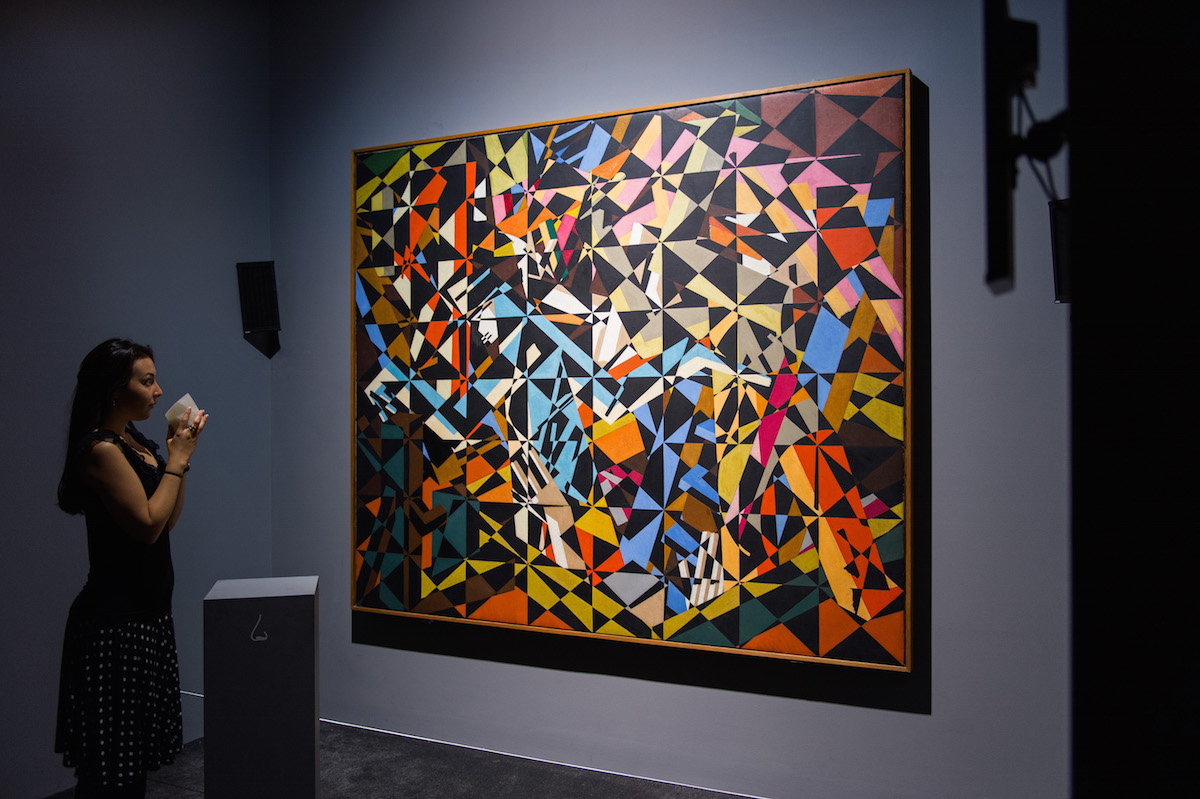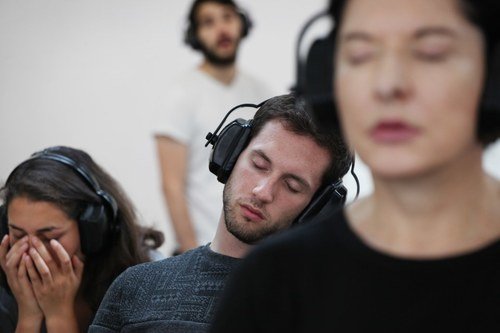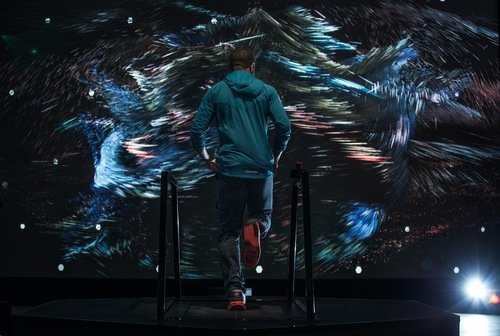Experiencing Experience
In a branded landscape where ‘experience’ has become the buzz word, true immersion and engagement are increasingly sought after by consumers tired of gimmicky events

Experience has become a buzz word. Especially in the world of branding. Today, no product launch is complete without an accompanying event, and the words ‘immersive’, ‘experiential’ and ‘interactive’ have become staple terms in any brand marketing booklet. From Nike to Nissan, companies have been gradually cottoning onto to the undeniable power experience yields when it comes to fostering consumer affinity.
“The concept of experiential marketing is gaining traction beyond just the marketing department,” explains Ben Reed, Head of Brand Engagement at The Silvertown Partnership, an initiative launched to provide brands with experiential spaces. “It’s becoming one of the cornerstones of brand strategy, as brands look to differentiate themselves. In this new relationship, experience is the currency that will lead brands to develop stronger relationships with customers for the long term.”
Nowadays, what most brands are aiming for is a continuous engagement with their audiences, creating 360 branded experiences that are rapidly transforming our role and relationship with big businesses. According to studies by McKinsey, experiential brand experience is the most powerful form of word of mouth, driving activity accounting for 50 to 80 percent in any given product category.
Why the sudden shift to experience? Well, James Wallman, author of Suffocation, believes that “millennials’ values have shifted from consumerism to experientialism and, as a result, they are now finding status, meaning, and happiness in experiences rather than objects.” It’s now becoming clear that early adopters’ preferred social currency measure has changed from products to presence. In a world of over consumption, discernment is increasingly defined by what one does, not by what they own.
All of this has been aided by the great symbol of 21st century culture — social media. A technology that’s enabled brands to be in consumer’s lives 24/7, and has embedded the experience with a new level of social currency that has arguably detracted from the event itself. The walls of a branded event space are often covered in prompts to take selfies and hashtag, and the desire to share often trumps the desire to actually be present and witness an event.
“Social media has changed peoples relationship with their own experiences,” explains Jacob Silverman, author of Terms of Service: Social Media and the Price of Constant Connection. “There’s a documentary impulse now that existed in a different form before. Perhaps some people seek out certain experiences for the sake of documenting and broadcasting them, but more than that, people perform their public selves now with the awareness that anything might be immediately shareable.”
Has our thirst for social currency made the experience less immersive and more superficial? How can brands leverage our desire for something meaningful into something that furthers their currency and social cache as a brand?
Key Takeouts
- Brands looking to make a deeper connection with their audience need to alleviate the burden of social media sharing
- Recording attendees’ data is a useful way to engage visitors in the event itself and gain key learnings into their interaction with the space
- Removing the ability to record creates a feeling of exclusivity in events
- Successful experiential marketing needs to be intuitive and organic for the consumers to want to take part in proceedings.
- Sensorial engagement creates a strong emotional bond and allows users to shape the experience. This is increasingly relevant as we move into a world of mass personalisation.
Data Driven Presence
For a company so ingrained in the digital, it’s surprising that Spotify created one of the most engaging real-world brand experiences to date. At 2014’s Coachella festival, visitors attending the event were given wristbands that enabled them to capture their experience. Users could check in at 17 points set up around the festival site, collecting custom playlists created for the event, and existing playlists curated by various artists, along the way. The wristband tracked their movements around the site, and once the event was over, compiled a personal snapshot of each user’s experience into a digital postcard they could share with friends.
Spotify’s experiment was one of those situations that benefited all involved. Festival goers leveraged their presence and their consumer data to be provided with an instantly shareable memory. Spotify gained an insight into their listeners music taste, as did Coachella. Each party leveraged a certain amount of their currency to gain something in return. And did so with an engaging product that enabled real presence — festival goers could experience the event without worrying how they would share share it, and the issue of losing track of who they were listening to was diminished.
For millennials, a shareable experience > is high value social currency... Any brand experience will obviously be more powerful if it gives the individual something they can share Ben Reed, The Silvertown Partnership
“For millennials, a shareable experience is high value social currency,” explains Reed. “Any brand experience will obviously be more powerful if it gives the individual something they can share. But to have real impact, brands must ensure storytelling and experience go hand in hand. If a brand relies on simply generating a few quick social media shares, they are unlikely to gain genuine brand loyalty and understanding.”
Data is sure to grow in importance in experiential marketing, but until recently, experiential has been an area that lacks measurability. The kind of spatial tracking technology Spotify used is useful for understanding hot spots at events, clearly showing where people are engaging most.
Ultimately what Spotify created was what Reed coins, “the perfect combination of social sharing, brand storytelling and meaningful experience.” The brand’s work with Coachella integrated social elements with a narrative that placed Coachella’s music front and centre. Not a bad result for a simple wristband.
The Audience is Present

“With a simplicity that harks back to her earliest solo performances, this time there are no rules,” wrote Julia Peyton Jones, co-director of the Serpentine Gallery in London, in a press release for an upcoming exhibition. “There is no formula. Just the artist, the audience and a few, simple props in the empty, white space of the Serpentine Gallery. Marina requests your presence at the Serpentine this Summer. And so do we.”
With that beckoning call so began the buzz that surrounded Marina Abramović’s 2014 show, 512 Hours. Hosted at the Serpentine Gallery, Abramović’s performance piece invited audiences to enter a space and immerse themselves in the environment. It was, in essence, an exhibition about being present.
Aside from the fact that an over-emphasis on social can, in many ways, detract from a physical experience, it can also make an experience common place. An overabundance of exposure at an event makes it feel less special, less exclusive. For Abramović’s show participants were asked to leave their phones and bags behind. It created a situation whereby the only opportunity visitors had to take photos were images of the entry stamps they were branded with upon entering. Images of wrists and hands adorned with black ink and the words 512 Hours accompanied by a date became a new status symbol, one that signified having seen something so mysterious it wasn’t even on social media.
The currency of Ambrovic’s event wasn’t just about the immersive sense of presence it enabled, but rather, the mystery that surrounded much of its content. Removing the ability to record had created a feeling of exclusivity. Although journalists and others had written about it, the true experience was only attainable by being there. At its opening , the queue stretched across the park. It’s popularity seems to represent just how much real presence was desired. One visitor wrote: “Thank you for the gift of time, time to listen to my body.” Another wrote: “Give your time to get the experience.”
Interactive Audiences

Today customers want to be a part of the brand story and even help shape the final product or service. There’s a strong consumer desire to be part of the process. According to our 2015 Audience Survey, 79% of respondents are interested in sharing ideas with brands about how to improve products. This is now extending to events.
Being able to shape and alter an event’s process and outcome is empowering, and can ultimately make consumers feel a stronger sense of loyalty to a brand. By engaging all of their senses an event becomes more memorable. Take Nike, for example. The brand collaborated with London-based studio, FIELD, to create an audio-visual installation. The project, titled Force of Nature, incorporated an interactive treadmill fitted with custom sensors that gave users a heightened sensation whilst running.
Interactivity seems like the next development of content. Sensorial engagement can create strong emotional bonds and memories, and allow users to shape an experience
Then take The Sensorium at Tate Britain for example, an exhibition that allowed visitors to interact with art through a variety of senses. Four paintings from the Tate collections were chosen by creative agency Flying Object for their degree of abstraction, and their openness to interpretation, alongside other sensory stimuli, (such as chocolates, perfumes, audio, and touchless haptics). The project enabled audiences to interact with art like never before, through unconventional mediums and senses.
Interactivity seems like the next development of content. Sensorial engagement can create strong emotional bonds and memories, and allow users to shape an experience. This will be increasingly relevant as we move into a world of mass personalisation. Sensorium drew the audience into the narrative by enabling participation. It wasn’t about documenting the event, but was rather about being present through interaction.
The End of Experience
Attending an exclusive event has always brought a sense of social currency along with it. But in the end, this focus on presence as currency appears to be dissolving the experience into something less meaningful.
Although brands and audiences benefit from the commodification of experience through social media, the pressure on attendees to digitally engage is detaching them from the true emotional value and engagement of an experiential event.
Truly enabling presence needs to work by way of intuition, and it needs to be organic. Whether that’s aided by data-tracking devices, a sense of isolation and mystery, or interactivity, this is the approach that reaps big rewards for brands and organisations investing in the space.
For brands to have currency in the experiential market they need to offer something more than encouraged hashtag signs and selfie booths. Somewhat, counter intuitively, the experiences that have currency today are those that enable true presence without the burden of social media sharing.


